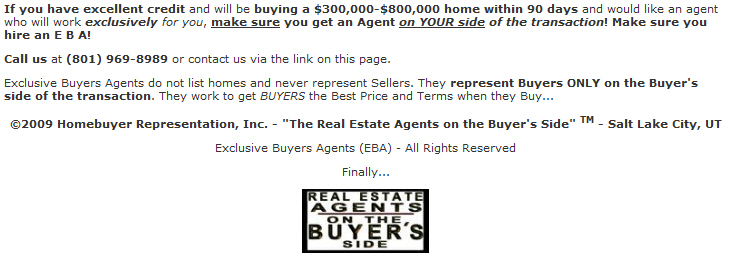Let's examine the top half of Page 1 of the new Good Faith Estimate (GFE) form.
One of the first changes you will notice about the Good Faith Estimate form is that it now asks for the Loan Originator's email address.
It also asks for a Property Address. Remember, without a property address (the one the borrower intends to get the loan for), the Good Faith Estimate is non-binding, meaning the lender (or loan originator) is not able to be held to fees and rates quoted. However, prior to closing, a Good Faith Estimate will all the required information on it must be completed. This must occur at least 3 banking days prior to settlement.

The next section of Page 1 of the Good Faith Estimate form explains the purpose of the GFE and explains that a borrower can shop for the best loan. It also mentions that the GFE contains a "shopping chart" on page 3 of the form, which we will cover when we get there.

Next is a section explaining 4 important dates relating to the Good Faith Estimate and the loan.
- The interest rate quoted on the Good Faith Estimate (GFE) has an expiration date. Pay attention to this date. If you have not locked your interest rate it will likely usually only be for the day the Good Faith Estimate is issued. It's possible that some lenders may even put an hour of day when the rate quoted expires.
In this event, note that in addition to the interest rate being able to change, some of the other fees may change until you lock your interest rate. Once you lock your interest rate, if anything has changed, the lender will provide you with yet another Good Faith Estimate (GFE) outlining the rate, fees, payment and other specific loan terms. Make sure that item 1 on the new Good Faith Estimate (GFE) now shows the date on which your rate lock will expire. - There is also an expiration date for the estimate of all other settlement charges quoted by the lender. Once again, make sure once you have locked your interest rate that this date will not arrive before your settlement date does.
- Item 3 explains the length of your interest rate lock. The reason this is important, even if you have not yet locked your interest rate is because the shorter the rate lock period, the lower interest rate is available to the lender (and to you). Keep this in mind as you compare offerings from lenders and as you evaluate your needs. It may not be the best idea to choose a lender based on their slightly lower interest rate quoted, if you will need a rate lock for 60 days and they have only quoted a 30 day lock period.
- You will need to lock your interest rate before the closing date. This is so the lender can finalize your loan package and prepare the documents necessary for your closing. Each lender will specify the minimum number of days they will need to carry out the rest of the process once you have locked your loan.

Continue on for an explanation of the rest of the new Good Faith Estimate (GFE) form.



Comments(1)